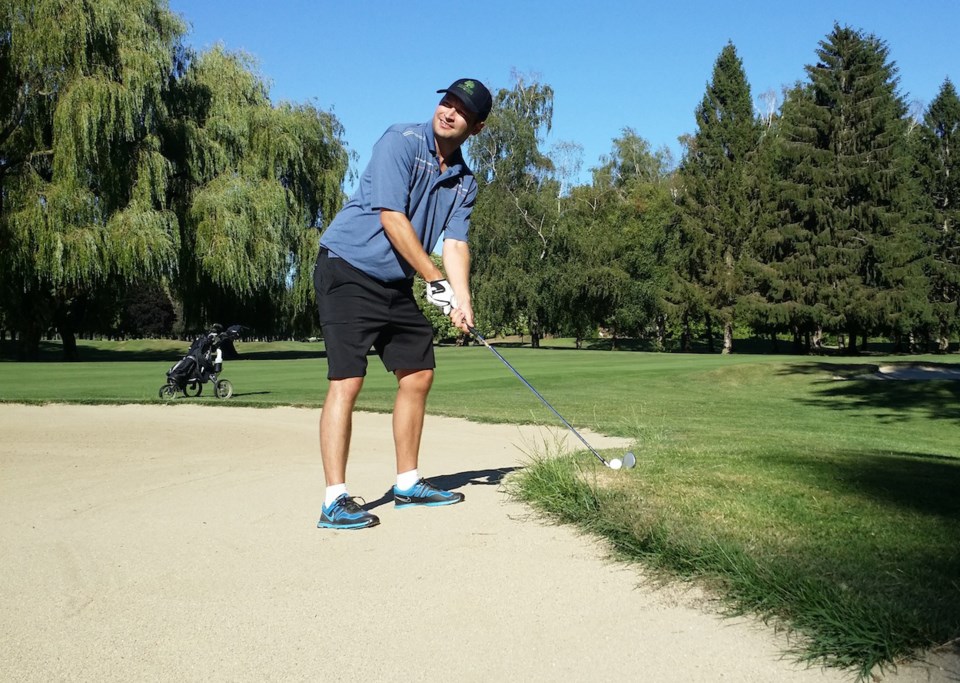What do you do when you end up with a terrible lie on the golf course?
The answer: Mitigate risk, like a sound financial planner.
Consider your scorecard as like your own personal stock ticker; invest well with wise decisions on and off the golf course and it will pay dividends — a hole-in-one is basically as good as $1,000, as some, like me, would know.
It’s inevitable that a golfer will face a bad lie or two during a round. It can be anything from the ball resting on a tree stump, having a branch in front of your ball’s trajectory or having the ball nestled on the inside edge of a bunker.
Personally, I always find it interesting being left-handed because many of the tough lies I face aren’t so for a right-handed golfer. I often wonder if there is a statistical disadvantage for southpaws. For instance, at the Richmond Country Club there are three holes that have water along the right hand side. Should a ball sit on the edge, a right-handed golfer can easily hit it, whereas a lefty would have to roll up his or her pants and get wet.
Nevertheless, it’s always fun to chirp sweet nothings at a righty who’s in a precarious position.
Now, back to the point, I must take you back to Sunday at Whistling Straits, Wisconsin for the 2015 PGA Championship where winner Jason Day was left with an awkward lie as his golf ball rested on a grass island inside a fairway bunker.
Day didn’t gun for the pin and managed a decent shot out of the dicey situation and went on to par the hole.
In another instance (and there were few on this day for him) Day cracked his drive into another fairway bunker. This time the lip was too steep in the direction of the hole and had Day aimed at it, there wasn’t a certain chance he would have gotten out of the sand.
So, Day chipped out on to the fairway, away from the hole, to save himself from a potentially embarrassing, and costly, failed shot to the hole.
Mind you, he did have a three-stroke lead and didn’t need to take any substantial risks.
And, as it was his day, he just so happened to manage a par with a great third shot over top of the pin.
In both cases Day saved himself up to two or three strokes by making smart, safe choices.
In golf, I am finding your head says one thing and your feet and hands say another. I have learned to mitigate my risky shots and am saving strokes as I go along.
Had you asked me in April where I’m aiming my shot with a bunch of trees in front of me, I would have probably told you I’m looking at a small opening between a bunch of branches.
Now, I would rather chip back out onto the fairway and leave myself with a good approach shot.
I suppose the same can’t be done if you’re in a tournament and need to make up strokes to catch the leader, or win a skin.
But certainly if you’re looking to improve your score and your composure at the same time, I would lean toward being a very conservative player.
No, it’s not any fun, but neither is looking at your scorecard after the 18th hole and having a conniption.



